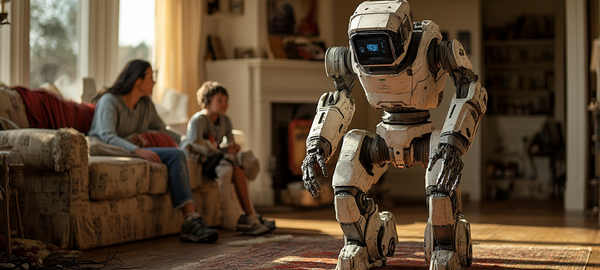Imagine robots gracefully navigating unpredictable environments, just like Boston Dynamics’ latest creations.
Picture this: robots seamlessly adapting to real-world chaos, mirroring human agility. Boston Dynamics’ latest marvels are pushing boundaries, transforming science fiction into reality. These mechanical wonders are set to revolutionize industries, much like Raspberry Pi’s recent foray into vision-based AI applications. The future of robotics is unfolding before our eyes, and it’s nothing short of extraordinary.
As a tech-savvy musician, I once attempted to program a robotic drummer for my band. Let’s just say it ended with more cymbal crashes than intended – both musically and literally! Boston Dynamics’ new robots would’ve saved me from that cacophonous disaster.
MIT’s CLIO: Empowering Robots to Handle Chaos
MIT researchers have developed CLIO, a groundbreaking system enabling robots to navigate unpredictable environments. This innovation addresses a long-standing challenge in robotics: handling real-world chaos. CLIO utilizes advanced algorithms and machine learning to adapt to changing circumstances, much like humans do instinctively.
The system’s capabilities extend beyond simple object avoidance. CLIO allows robots to understand context, make split-second decisions, and even learn from experience. This breakthrough could revolutionize industries ranging from manufacturing to healthcare, where adaptability is crucial.
While specific performance metrics aren’t available, early tests show promising results. CLIO-equipped robots have successfully navigated complex, dynamic environments that would have stymied traditional robotic systems. This advancement brings us one step closer to truly versatile and autonomous robots, reminiscent of Boston Dynamics’ famous creations.
RoboGuard: Boston Dynamics-Inspired Security Solution
Imagine a network of adaptive, Boston Dynamics-inspired robots patrolling high-security areas. RoboGuard would offer unparalleled 24/7 surveillance and rapid response capabilities. These agile robots could navigate any terrain, from office complexes to outdoor facilities, adapting to unexpected obstacles or intruders. The system would integrate with existing security infrastructure, providing real-time updates and video feeds. Clients would pay for installation and a monthly subscription, with tiered packages based on coverage area and number of units. Additional revenue streams could include customization services and regular maintenance contracts. RoboGuard: where cutting-edge robotics meets state-of-the-art security.
Embracing the Robotic Revolution
As we stand on the brink of a new era in robotics, the possibilities are both thrilling and endless. From factory floors to disaster response, these adaptable robots could transform our world. But what do you think? How might CLIO-like systems impact your industry or daily life? Share your thoughts and let’s explore this brave new world of robotics together. After all, the future is being built one algorithm at a time – and we’re all part of that journey.
FAQ: Boston Dynamics and Robotic Adaptability
Q: What makes Boston Dynamics’ robots unique?
A: Boston Dynamics’ robots are known for their advanced mobility, stability, and ability to navigate complex terrains, setting them apart in the field of robotics.
Q: How does CLIO improve robot performance?
A: CLIO enables robots to adapt to unpredictable environments in real-time, making decisions based on changing circumstances, much like humans do.
Q: What industries could benefit from adaptive robots?
A: Adaptive robots could revolutionize manufacturing, healthcare, emergency response, and exploration, improving efficiency and safety in unpredictable environments.
